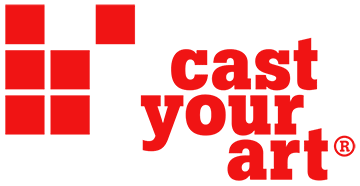Herbert Boeckl - Capturing the Essential
Centuries do not have clear boundaries, rather, they flow into each other in the same way that the years which they are made up of do. The transition period in which the nineteenth and twentieth century collapsed into each other was called the fin de siècle. The fact that something was coming to an end was a modern perspective.
In 1918, Gustav Klimt, Egon Schiele, Otto Wagner, and Koloman Moser all died within a year. Accompanying them was the fall of turn-of-the-century, successfully up-and-coming, modern Austrian art. So what remained in terms of artistic progress? For one thing, there was Oskar Kokoschka. He had moved to Dresden and fled—as did a majority of the intellectual and artistic heavyweights—upon the rise of the National Socialists: first to Prague, and then to London. And then there was Herbert Boeckl, who stayed behind. This starting point was not exactly ideal for the development of the painter: an authoritarian, conservative, anti-modern mood prevailed in Austria, along with a shortage of moral support from colleagues.
Towards the end of the turn of the century, Herbert Boeckl’s works were close to those of Oskar Kokoschka and Egon Schiele: expressionistic. Over the course of time, however, his painting took many turns. University professor and grandchild Matthias Boeckl counts five direction changes: first, there were the traditional atmospheric paintings of his early Carinthian years, then his move to secessionism with his line paintings, then expressionism, then his pastose phase of expressionistic realism, and finally, his abstract colorfield painting, starting from the end of the Second World War. Boeckl himself always rejected a categorization according to creative periods, rather, he saw his work in relation to motifs. Boeckl sharpened his view of nature and humanity, of the essence of existence, of the necessary form, in his portraits and landscapes. Both, according to Agnes Husslein-Arco, director of the Belvedere and granddaughter of the artist, proved to be persistent motifs throughout his stylistically diverse work.
The intrinsic, the enduring, the fundamentally valid: this is what Herbert Boeckl wanted to maintain as a painter. This objective did not, however, make him conservative, rather it made him an advocate of modernity. He experimented to figure out which new possibilities on offer would preserve that which was essential. However, his focus on the everlasting probably corresponded to his religious nature. At the beginning of his career, Boeckl had already completed a fresco in the Church of Maria Saal, which locals considered provocative and which therefore remained covered for years. At the very end of his life, he created one of his most important works, "The Apocalypse", in the Angels’ Chapel at the Seckau Monastery.
Boeckl was committed to the ideals and style directions that modernity brought out, and he shaped the development of the Austrian art scene as a director and professor at the Academy of Fine Arts in Vienna, as well as as a prominent member of the Austrian Art Senate. He supported the appointment of Fritz Wotrubas and Albert Paris Gütersloh as professors at the Academy and counted among his students some of the most important artists of the postwar generation—including Maria Lassnig and Alfred Hrdlicka.
On the occasion of the retrospective of Boeckl’s works at the Lower Belvedere in Vienna, CastYourArt spoke with both curators of the exhibition, Agnes Husslein-Arco and Matthias Boeckl, in Herbert Boeckl’s studio, which has remained virtually untouched since his death in 1966. Accompanying the exhibition is a 500-page catalog which includes a list of Boeckl’s works. (wh/jn)
The exhibition is in view at the Lower Belvedere in Vienna until January 31, 2010.
Das könnte Sie auch interessieren

PERRINE LACROIX. In der Kunsthalle Krems
7. January 2019
Hans Kupelwieser - Reflections
28. September 2012
Siegfried Anzinger – a vortex of emotions
17. February 2014
POP ART. The bright Side of Life
22. April 2024
ALFONS HAIDER. Über Keith Haring im Albertina Museum
11. April 2018
ÁKOS EZER. Anerkennungspreisträger STRABAG Artaward International 2022
27. September 2022
Jim Dine - I Never Look Away
11. July 2016
